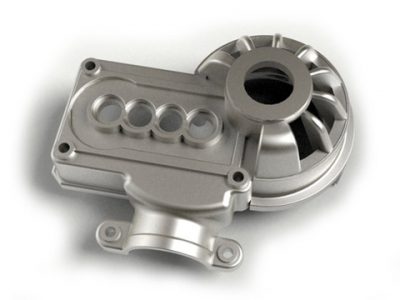In past entries, we have made a pretty strong case behind the reasoning why die casting is still one of the best manufacturing procedures you can use to create a product if you intend to work with metal. The added value in durability alone makes the investment absolutely worth it, and we are not even considering the low rate of failures achieved by the dies.
It’s true that the market is currently shifting to more practical and cheaper manufacturing methods. Plastic resins seem to be the new norm for many builds out there. But there are certain things that no plastic can achieve, such as the conductibility features found in die cast metal such as aluminum. Plastic and electric energy are still incompatible to this date; only metals can get the job done.

aluminium die casting parts*
Die casting Properly Taught
The truth is that even the best die cast parts begin their life as a design. The creation of the die is genuinely complex and challenging. Prototyping is required at more advanced stages for this one since the dies are not as flexible as the ones used for plastic molding. Once the metal starts pouring on the die, there is turning back when it comes to changes.
The modification of a die it’s not exactly impossible, but it’s so costly that it would be probably better to create a new mold with revision instead. The issue is that creating the die itself, it’s so complicated that working out details out of it after the die is finished can be discouraging at best, a complete loss of money at worst.
The creation of a die casting design is to bring molds whose sole mission is to maximize product functionality while being able to handle quick turnarounds with minimal openings for defects. The best ways to achieve these goals is by following some of these manufacturing tips we have collected across the internet to help you succeed in the use of die cast metals. Now sit back and read on:
· Work with Uniform Wall Thickness
This is certainly a cause for headaches when it’s being dealt with in plastic molding projects. But it’s a walk in the park when it comes to die casting. This type of manufacturing makes it pretty easy to create uniform wall thickness around the casting die. Is a far reach to try to achieve 100% uniformity on all the parts, but it certainly will be easier to minimize wall thickness variations in the finished products.
An uneven wall thickness brings a few issues, such as different cooling rates along the casting walls. These disperse cooling rates can bring other problems such as casting problems and diverse dimensional variations that can bring a lot of faulty products. By pursuing uniform metal thickness, you will make sure that the metal flow is steady as is needed to achieve the best possible casting filling for high-quality products.
· Use Drafts
Your die needs to have tapered walls that run in the same direction of the die as it does the open/close movement. If you fail to place them properly, you will be unable to remove the casting from the die. Do your best to make sure that your die cast has as many tapers on the inside walls as it has in the outside. When the alloy solidifies, it shrinks and fits tightly on the inside casting. The interior draft makes it easier to remove it.
· Learn to Deal with Fillets and Corners
If you manage to do your best to make the insides and outside corners of your casting as long as possible, you will have a quite a few benefits for your finished product, such as a decreasing degradation of the die in the corners, an improved flow of metal, a sturdier finished product with a more natural finish application.
· Include Ribs and Bosses
By placing ribs and bosses in the casting design, you will be able to eliminate any sharp corners, and you will also increase the strength of the finished part.
· Look for Same Side Die Dimensions
By making sure that both sides of the die are at the same dimensions you will instantly solve the issue of additional operations to meet tolerances, and you will confirm that you have a genuinely cost-effective die cast.
· Include Metal Savers in Your Design
A metal saver is nothing more than an air pocket strategically located in the design to make it a bit more lightweight and manageable. While this approach might seem weird, this is done to save materials and to make the products lighter without compromising the structural integrity of it.
· Avoid Undercuts
Undercuts in the part design means that a regular die cast mold will not work at all. Make sure to add a slide in the direction of the die draw to fix this issue.
Reference
*Image from on https://www.taiwantrade.com
